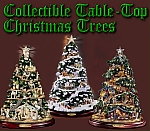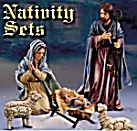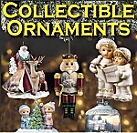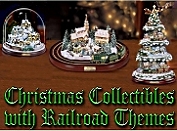|
|
Traditional Home-Made Ornaments from Family Christmas OnlineTMAlthough German-speaking immigrants probably brought the Christmas tree tradition to North America in the seventeenth century, Christmas trees didn't become "mainstream" among most English-speaking Americans until the mid-nineteenth century. In those days, trees hardly had any decorations, and what they had tended to be home-made or borrowed from other uses. They did have special little candleholders for the trees (something most people don't use today - lots of fires resulted from real candles on real trees.) But other than that, folks mostly used ribbons or whatever they had on hand to decorate the trees. In the late 1800s, it became more common to add "store-bought" blown glass balls that had been made by European craftsmen. But even families who could afford such things supplemented them with home-made ornaments and garland. This article is about some of the home-made, borrowed, adapted, or "found" materials folks have used over the years on their Christmas trees. Parts of it may give you ideas, and parts of it fall under the category of "don't try this at home."Paper Ornaments
Crocheted Ornaments In families with a tradition of crocheting doilies, there was no reason not to make some that looked like snowflakes and starch them to go on the Christmas tree. I hope to have instructions for this sort of thing in English one of these days. (Most crochet instructions seem to consist of phrases like "24ch, slst into 10th ch from hook.") An About.com writer, Amy Solovay has provided an article on making a simple crochet snowflake here, with links to the individual stitches that the project uses. Several more advanced snowflake patterns are provided on thisAustralian Women's Weekly article. If you don't know how to crochet all, Sandi Marshall has some very helpful tutorials for absolute beginners, starting with her How to Make a Crochet Starting Chain article. If those pages should be taken down, simply google "crocheted snowflakes," and you'll get about forty thousand entries, most of which are links to other sites, but some of those links are productive. In families with a tradition of crocheting doilies, there was no reason not to make some that looked like snowflakes and starch them to go on the Christmas tree. I hope to have instructions for this sort of thing in English one of these days. (Most crochet instructions seem to consist of phrases like "24ch, slst into 10th ch from hook.") An About.com writer, Amy Solovay has provided an article on making a simple crochet snowflake here, with links to the individual stitches that the project uses. Several more advanced snowflake patterns are provided on thisAustralian Women's Weekly article. If you don't know how to crochet all, Sandi Marshall has some very helpful tutorials for absolute beginners, starting with her How to Make a Crochet Starting Chain article. If those pages should be taken down, simply google "crocheted snowflakes," and you'll get about forty thousand entries, most of which are links to other sites, but some of those links are productive.
Recycled Metal OrnamentsIn times and places where nearly everything was saved and reused, it was common to repurpose used metal items for Christmas decorations. Of course they could be thrown away at the end of the season, but it was a good way to stretch your decorating dollar. Two come to mind immediately:
Natural MaterialsPine cones, seed pods, grape vines, and many other products found in nature also found their way onto Christmas trees. A few examples are:
There were many other kinds of ornaments and kinds of materials used, so we expect to expand this list as this section of the site grows. So check back. And in the meantime, and please contact us if you have any decoration or craft experiences you'd like to share with your fellow readers. In the meantime, here are some other articles that may get you thinking about certain kinds of decorations.
If you've been reading our pages, you know that we have big things planned, and a lot on our plate, so keep checking back. And contact us with any questions or suggestions you have in the meantime. Paul and Shelia Race To return to the Family Christmas OnlineTM Home Page, click here. |




|

| 
| 
| 
| 
|
Note: Family Christmas OnlineTM is a trademark of Breakthrough Communications(tm) (www.btcomm.com).
All information, data, text, and illustrations on this web site are
Copyright (c) 2006, 2007, 2008, 2009, 2010 by Paul D. Race.
Reuse or republication without prior written permission is specifically
forbidden.
Family Christmas Online(tm) is a participant in the Amazon Services LLC Associates Program, an affiliate advertising program designed to provide a means for sites to earn advertising fees by advertising and linking to amazon.com.
For more information, please contact us